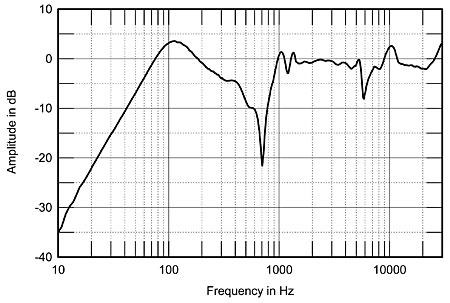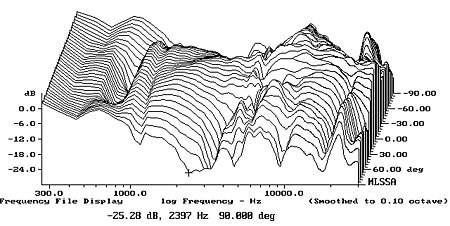The criteria for loudspeaker choices.
I’m signed up for PS Audio promotional emails, and the one that arrived today announces the introduction of the newest, smallest model in their Aspen line of loudspeakers, the FR5. I read through all of the details on the speaker, and one statement made instantly brought to mind a question. Read on if you’re interested.
In the section labeled Technology, PS Audio makes this statement:
"We started with our planar magnetic tweeter. Moving air at high frequencies without coloration or distortion is a daunting task. On the FR5 we chose to go with a technology that has the speed of an electrostat with the dynamics of a cone. Planar Magnetics. This ultra-low distortion driver is driven from front and rear magnetic structures that offer inherent linearity through symmetrical "push-pull" neodymium motor structures and directly driven ultra-low mass diaphragms with none of the cone or dome breakup, inductance modulation, or hysteresis distortion that plagues traditional drivers."
Amen, brother! Other information provided is that the FR is a 2-way, with a 6.5" woofer, a Linkwitz-Riley 6th order acoustic crossover frequency at 1750Hz, and a rear-mounted 6 x 9 passive radiator. And that PS Audio makes the crossover using "Custom film capacitors and premium air-core inductors." (hallelujah!) Sensitivity is 83.5 dB, and the price for a pair is $3499 plus shipping.
Okay, all that is nice to hear. But what if there were a loudspeaker that uses a Planar Magnetic driver (like that of PS Audio, with a symmetrical push-pull motor structure and directly driven ultra-low mass diaphragm) for not just high frequencies, but the entire range from 180Hz all the way up to 10kHz, with another smaller P-M for frequencies above 10k and an 8" dynamic woofer for frequencies 180Hz and below? And has the same sensitivity (84 dB)? And a lower price ($3200, shipping in the U.S.A. included)?
Well, you would compare the two, and see which produces the sound you like most, right? Well yeah, but if PS Audio’s opinion of Planar Magnetic drivers is well-deserved and earned, why WOULDN’T you want one to reproduce the frequencies below the FR5’s crossover frequency of 1750Hz? There happens to exist just such a loudspeaker, the Eminent Technology LFT-8b. Reviewed by Robert Greene in TAS, and Steve Guttenberg on YouTube.
So if the PS Audio FR5 piques your interest, you may want to audition the ET LFT-8b as well. By the way those of you contemplating the purchase of the similarly-price Magnepan MG1,7i: the 1.7i has a single-ended motor structure (magnets on only one side of the diaphragm), seriously compromising it’s sound quality potential. Would you even consider a dynamic driver ("cone") that was single-ended?! And, the 1.7i has a nominal impedance of 4 ohms, but dips even lower at some frequencies, making a high current amp mandatory. The LFT-8 is an 8 ohm load, the Planar Magnetic panel itself 11 ohms (two pair of binding posts are provided, making bi-amping easy).
As a long-time Quad ESL owner, I consider the LFT-8 a Godsend. The transparency and ultra-low coloration of an electrostat, without the maximum SPL limitations of the Quad. Great for the Baroque period Classical and Bluegrass I love, but also the AC/DC I sometimes crave. 




